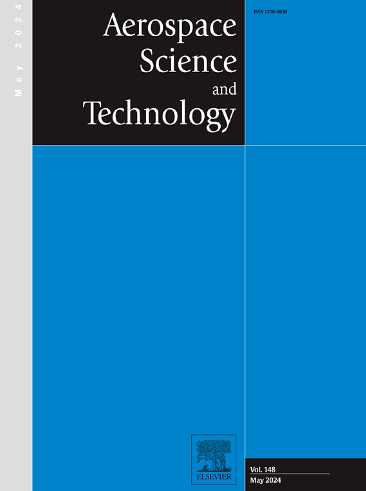An investigation on bleed flow control of an axisymmetric supersonic intake based on parametric outline optimization design
IF 5
1区 工程技术
Q1 ENGINEERING, AEROSPACE
引用次数: 0
Abstract
The intake plays an important role in the supersonic propulsion system, which restricts the performance of the entire propulsion system. It has been a challenge to ensure that the intake performs well in wide operating range. In this study, based on the multi-objective genetic algorithm, the baseline geometry of the intake is firstly optimized with Ma4 as the design point, and the total pressure coefficient at the outlet of the intake is 0.574. Secondly, in response to the performance decline and starting issues of the intake at off-design points, research is conducted on the scheme and physical mechanisms involving bleed flow control and the axial relative movement of the center body. The axial relative displacement of the center body decreases by 8.98 % due to the introduction of bleed slots, enabling the intake to start under conditions of larger internal contraction ratio. The mass flow rate loss caused by the bleed slots can be compensated by moving the center body and increasing the internal contraction ratio, as it enlarges the capture area of the intake. At Ma0=4, the intake achieves a 2.58% increase in total pressure recovery with a 1.284 % bleed flow rate for the separation bubble eliminated. At Ma0=1.5, the intake achieves a 6.47 % increase in total pressure recovery with a 6.6 % bleed flow rate, because the internal contraction ratio of the intake is enlarged and the terminal shock wave/boundary layer interaction is suppressed. But excessive bleed flow rate leads to the enhancement of terminal shock wave train which is detrimental.
求助全文
约1分钟内获得全文
求助全文
来源期刊

Aerospace Science and Technology
工程技术-工程:宇航
CiteScore
10.30
自引率
28.60%
发文量
654
审稿时长
54 days
期刊介绍:
Aerospace Science and Technology publishes articles of outstanding scientific quality. Each article is reviewed by two referees. The journal welcomes papers from a wide range of countries. This journal publishes original papers, review articles and short communications related to all fields of aerospace research, fundamental and applied, potential applications of which are clearly related to:
• The design and the manufacture of aircraft, helicopters, missiles, launchers and satellites
• The control of their environment
• The study of various systems they are involved in, as supports or as targets.
Authors are invited to submit papers on new advances in the following topics to aerospace applications:
• Fluid dynamics
• Energetics and propulsion
• Materials and structures
• Flight mechanics
• Navigation, guidance and control
• Acoustics
• Optics
• Electromagnetism and radar
• Signal and image processing
• Information processing
• Data fusion
• Decision aid
• Human behaviour
• Robotics and intelligent systems
• Complex system engineering.
Etc.
 求助内容:
求助内容: 应助结果提醒方式:
应助结果提醒方式:


